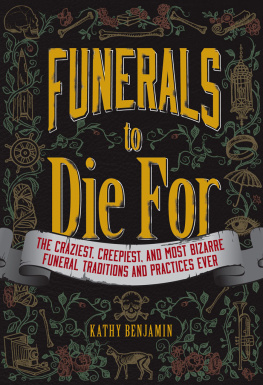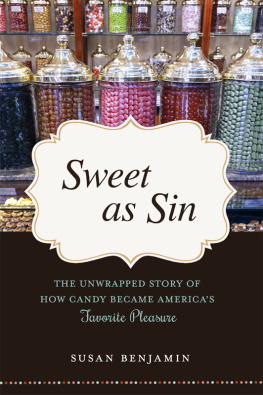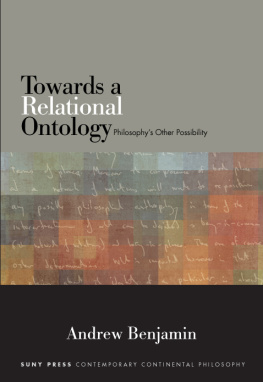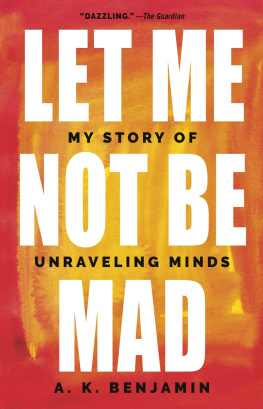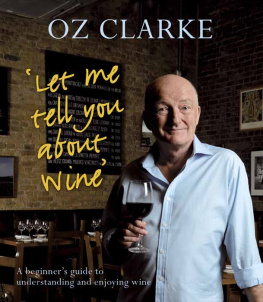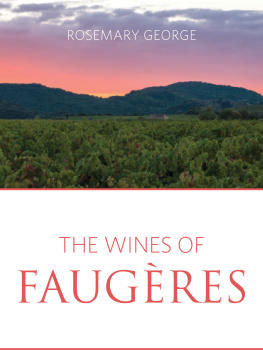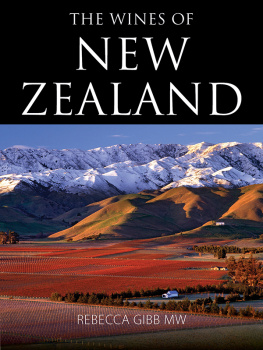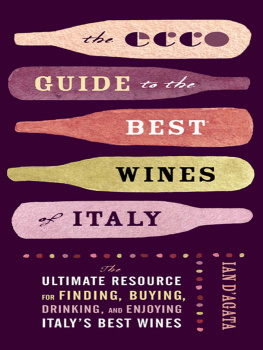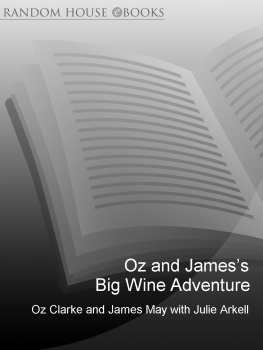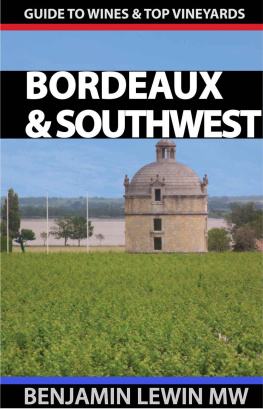Benjamin - Wines of the Rhône
Here you can read online Benjamin - Wines of the Rhône full text of the book (entire story) in english for free. Download pdf and epub, get meaning, cover and reviews about this ebook. year: 2016, publisher: Vendange Press, genre: Detective and thriller. Description of the work, (preface) as well as reviews are available. Best literature library LitArk.com created for fans of good reading and offers a wide selection of genres:
Romance novel
Science fiction
Adventure
Detective
Science
History
Home and family
Prose
Art
Politics
Computer
Non-fiction
Religion
Business
Children
Humor
Choose a favorite category and find really read worthwhile books. Enjoy immersion in the world of imagination, feel the emotions of the characters or learn something new for yourself, make an fascinating discovery.

- Book:Wines of the Rhône
- Author:
- Publisher:Vendange Press
- Genre:
- Year:2016
- Rating:5 / 5
- Favourites:Add to favourites
- Your mark:
- 100
- 1
- 2
- 3
- 4
- 5
Wines of the Rhône: summary, description and annotation
We offer to read an annotation, description, summary or preface (depends on what the author of the book "Wines of the Rhône" wrote himself). If you haven't found the necessary information about the book — write in the comments, we will try to find it.
Wines of the Rhône — read online for free the complete book (whole text) full work
Below is the text of the book, divided by pages. System saving the place of the last page read, allows you to conveniently read the book "Wines of the Rhône" online for free, without having to search again every time where you left off. Put a bookmark, and you can go to the page where you finished reading at any time.
Font size:
Interval:
Bookmark:
The Rhne |
Intelligent Guides to Wines & Top Vineyards |
Benjamin Lewin MW
Copyright 2015 Benjamin Lewin
Vendange Press
www.vendangepress.com
Without limiting the rights under copyright reserved above, no part of this publication may be reproduced, stored in or introduced into a retrieval system, or transmitted, in any form or by any means (electronic, mechanical, photocopying, recording or otherwise) without the prior written permission of both the copyright owner and the above publisher of the book. All enquiries should be directed to contact@vendangepress.com.
Preface |
Based on my book, Wines of France, this eGuide is devoted specifically to The Rhne. The first part discusses the region and its wines; the second part has individual profiles of the top producers. The basic idea is that the first part explains the character and range of the wines, and the second part shows how each winemaker interprets that character.
In the first part I address the nature of the wines made today and ask how this has changed, how its driven by tradition or competition, and how styles may evolve in the future. I show how the wines are related to the terroir and to the types of grape varieties that are grown, and I explain the classification system. For each region, I suggest reference wines that I believe typify the area; in some cases, where there is a split between, for example, modernists and traditionalists, there may be wines from each camp.
Theres no single definition for what constitutes a top producer. Leading producers range from those who are so prominent as to represent the common public face of an appellation to those who demonstrate an unexpected potential on a tiny scale. The producers profiled in the guide should represent the best of both tradition and innovation in wine in the region
In the profiles, I have tried to give a sense of each producers aims for his wines, of the personality and philosophy behind themto meet the person who makes the wine, as it were, as much as to review the wines themselves. For each producer I suggest reference wines that are a good starting point for understanding his style. Most of the producers welcome visits, although some require appointments: details are in the profiles. Each group of profiles starts with maps to show the locations of the vineyards to help plan itineraries.
The guide is based on many visits to France over recent years. I owe an enormous debt to the hundreds of producers who cooperated in this venture by engaging in discussion and opening innumerable bottles for tasting. This guide would not have been possible without them.
How to read the producer profiles |
The second part of this guide consists of profiles of individual wine producers. Each profile shows a sample label, a picture of the winery, and details of production, followed by a description of the producer and winemaker. A full list of the symbols used in the profiles appears at the start of the profile section. The producers rating (from one to three stars) is shown to the right of the name. This is an example:
Hospices de Beaune | *, **, or *** |
|  Hotel Dieu, Beaune, France Hotel Dieu, Beaune, Franceaddress  03 80 24 44 02 03 80 24 44 02 Catherine Guillemot Catherine Guillemot catherine.guillemot@ch-beaune.fr catherine.guillemot@ch-beaune.fr Corton principal AOP Corton principal AOP Beaune 1er, Nicolas Rolin Beaune 1er, Nicolas Rolinred reference wine  Corton Charlemagne, Charlotte Dumay Corton Charlemagne, Charlotte Dumaywhite reference wine  www.hospices-de-beaune.com www.hospices-de-beaune.com    details of producer 60 ha; 400,000 bottles vineyards & production |
The Hospices de Beaune was founded in 1443 by Nicolas Rolin, chancellor of Burgundy, as a hospital for the poor. Standing in the heart of Beaune, the original buildings of the Hotel Dieu, now converted into a museum, surround a courtyard where an annual auction of wines was first held in 1859. The wines come from vineyards held as part of the endowment of the Hospices, and are sold in November to negociants who then take possession of the barrels and mature the wines in their own styles. (Today the auction is held in the modern covered marketplace opposite the Hotel Dieu.) There are 45 cuves (32 red and 13 white); most come from premier or grand crus from the Cte de Beaune or Cte de Nuits, but because holdings are small (depending on past donations of land to the Hospices) many cuves consist of blends from different crus (and are identified by brand names). The vines are cultivated, and the wine is made, by the Hospices. For some years the vineyards of the Hospices were not tended as carefully as they might have been, and the winemaking was less than perfect, but the appointment of a new rgisseur has led to improvements in the present century. The name of the Hospices is only a starting point, because each negociant stamps his own style on the barriques he buys.
Contents |
The Rhne |
I got red blood, and I got blood red wine
Which I bring you, when the snow is heavy on the ground
(Rolling Stones
The powerful red wines of the Rhne are definitely wines to enjoy in the winter. Viticulture most likely started in the warm climate of the Mediterranean coast when grapevines were brought from Greece to Massilia (now Marseilles) around 600 B.C.E. The importance of wine production increased after the Romans took over Gaul in the first century B.C.E. By the first century C.E., wine production had expanded north as far as Vienne, the capital of mid-Gaul, under the influence of the Allobroges tribe, who were admired by the Romans for their skill in producing a wine called vinum picatum. Under the Romans, wine production became increasingly sophisticated, with the best known wines coming from Marseilles, Vienne, and Narbonne.
The river Rhne flows south from Lake Geneva across Savoie, before turning west to Lyon, from where it flows more or less directly south for two hundred miles before debouching into the Mediterranean near Marseilles. Wine is produced all along the Rhne, from below Lyon to the south of Avignon. Production divides naturally into two regions, the Northern Rhne and Southern Rhne, which are about as distant and distinct from one another as they are from Beaujolais to their north. There is a gap of about 30 miles between the regions. The major difference between north and south is driven by climate: the Northern Rhne is only a little warmer than Burgundy, but the Southern Rhne distinctly belongs to the warm south. Its a measure of the difference that chaptalization is allowed in the Northern Rhne, but is forbidden in the south. The grape varieties in the north and south are different, but both are definitely red wine country: white wine production is only about 10%. The difference is eloquently put by Ralph Garcin at Maison Jaboulet: For me the Rhne is ying and yang, it has two heads, Syrah and Grenache, the people are different, there is the north and there is the south.
Next pageFont size:
Interval:
Bookmark:
Similar books «Wines of the Rhône»
Look at similar books to Wines of the Rhône. We have selected literature similar in name and meaning in the hope of providing readers with more options to find new, interesting, not yet read works.
Discussion, reviews of the book Wines of the Rhône and just readers' own opinions. Leave your comments, write what you think about the work, its meaning or the main characters. Specify what exactly you liked and what you didn't like, and why you think so.

